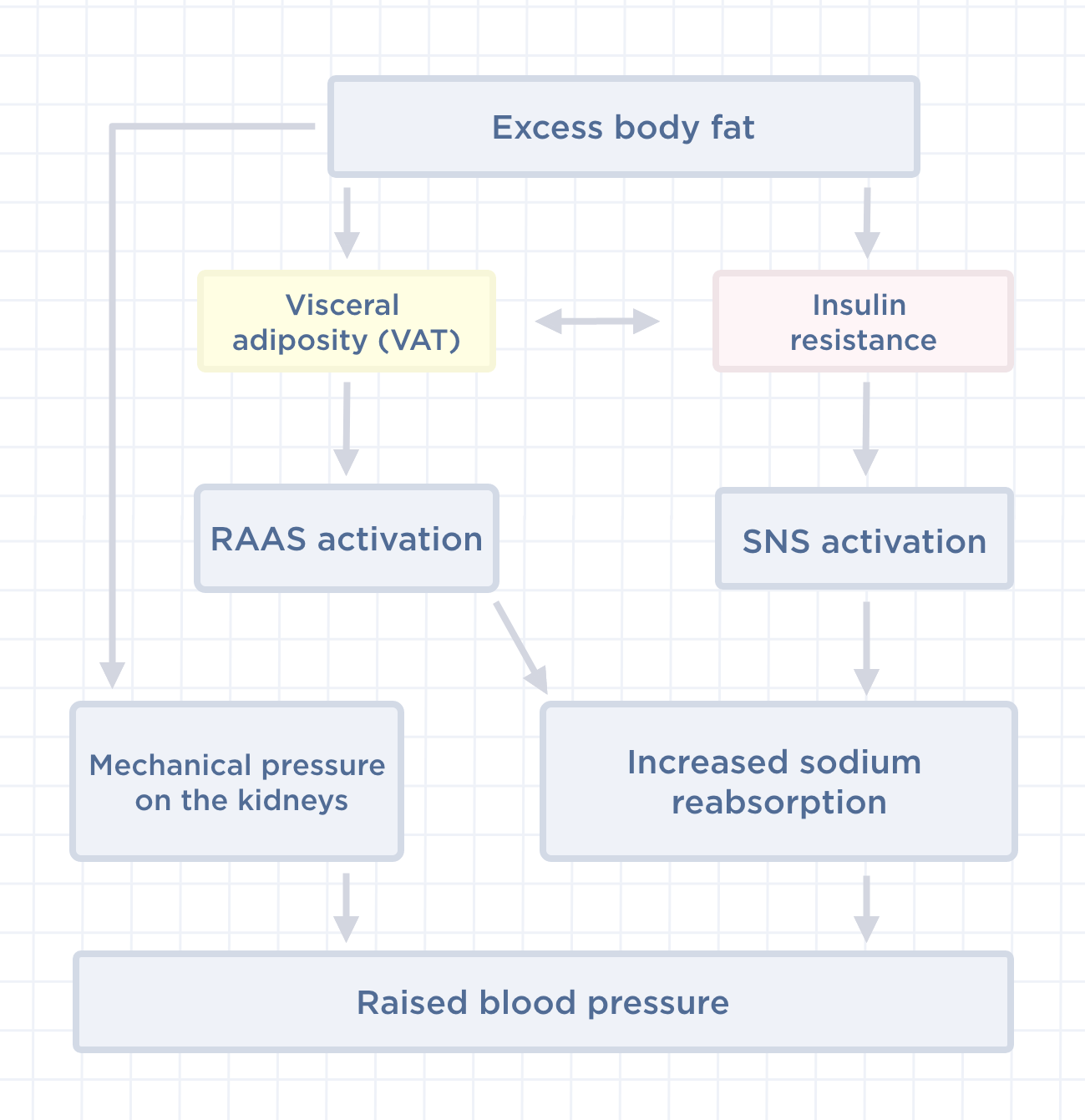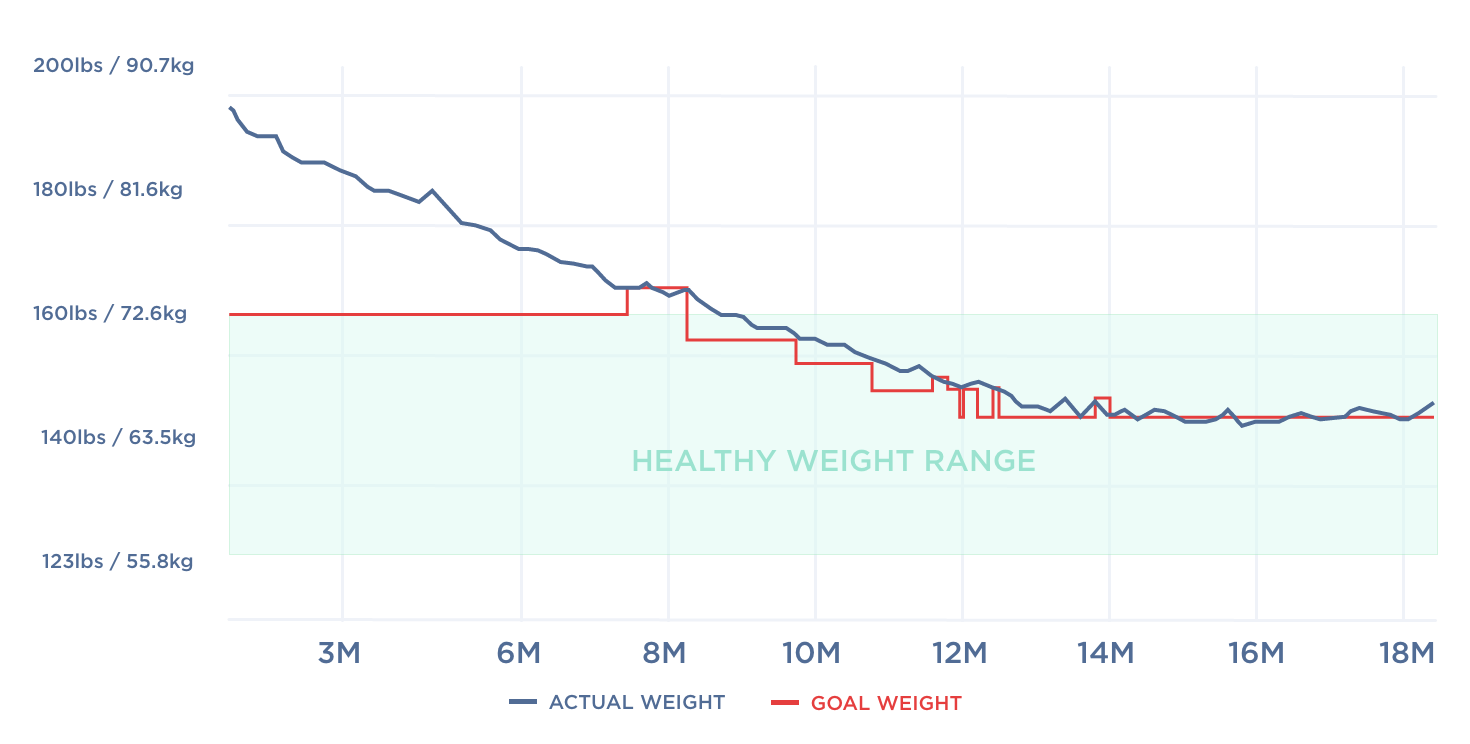10%の割引を受ける
登録することで初回注文で割引を受ける
登録することにより、Withingsからの広告メールを受け取ることに同意したことになります。ただし、気が変わった場合はいつでも退会できます。*この割引は、コード受領後30日間に€100以上の購入(ScanWatch Novaを除く)に有効です。withings.comでのみ有効で、在庫がある限り有効です。このオファーは初回購入にのみ有効です。これらのオファーは併用できません。

High blood pressure is a well-known cardiovascular risk factor. It is sometimes difficult to prevent because of the absence of symptoms, and is often associated with excess weight. Often, if weight increases, so does blood pressure.
Your heart is an amazing organ, pumping five quarts of blood every minute and up to 2,000 gallons of blood per day. You may know that cardiovascular diseases are the number-one cause of death globally, killing an estimated 17.9 million people each year.
You may have heard that lifestyle changes can have a huge impact on your cardiovascular disease risk. But let’s take a closer look at heart health and weight, specifically, and see how losing extra pounds may help to lower blood pressure.
“The Nurses Health Study compared women with BMIs of less than 22 with those above 29 and found a 2- to 6-fold greater prevalence of hypertension among the obese."
Source: "Weight Loss and Blood Pressure Control," AHA Journals, 2008
As early as 1923, in "The blood pressure of healthy men and women", Dr. Brandreth Symonds established an association between weight and high blood pressure.
Today, weight and blood pressure are a major public health concern, given that they can have a major impact on the cardiovascular and renal systems of those who are overweight.
Learn more about the pathophysiological mechanisms that promote elevated blood pressure in people who are overweight.

High blood pressure, or hypertension, is when your blood pressure—or the force of blood pushing against the blood vessels—is too high. A blood pressure of 130/80 or higher is considered to be hypertensive, and a blood pressure of 120-29 and more than 80 is considered elevated, meaning you’re at risk for developing hypertension.
In 2018, the American College of Cardiology and the American Heart Association changed their blood pressure guidelines, eliminating the “prehypertension” category and lowering the definition of high blood pressure.

The CDC defines adult overweight and obesity as “weight that is higher than what is considered as a healthy weight for a given height.”
An adult who is 20 years of age or older is considered overweight if he or she has a body mass index (BMI) between 25 and 29.9, and obese if he or she has a BMI of 30 or more. While BMI may not tell the whole story when it comes to weight, it is widely used as a metric to determine overweight and obesity.
When talking about excess weight, we often refer to excess body fat. While not all obese individuals develop high blood pressure, scientific evidence supports that several pathophysiological mechanisms contribute to obesity-induced hypertension.

The sympathetic nervous system (or SNS) is a network of nerves that allows our brain to control blood pressure by adjusting the diameter of peripheral arteries through electrical impulses. In obese people, fat cells and insulin resistance tends to stimulate this sympathetic response.
Activation of the sympathetic nervous system has been considered to have an important function in the pathogenesis of obesity-related hypertension.
Source: "Mechanisms of obesity-induced hypertension," Hypertension Research, 2010
Too much visceral fat—the fat that is stored around the abdomen—can lead to abnormal compression of the kidneys or even a kidney injury that may progress. "Abnormal kidney function, which is associated with increased tubular sodium reabsorption, has a key role in initiating obesity-associated hypertension."
These fat cell tissues secrete many hormones. In the kidneys, they can disrupt the renin-angiotensin-aldosterone system (or RAAS) responsible for sodium (salt) balance. The kidney must therefore maintain a higher blood pressure to excrete the daily intake of salt.
The association of VAT accumulation with high blood pressure can be confounded by several factors, including age, gender, degree of obesity, and glucose tolerance status; each of these factors has been shown to be related to both abdominal obesity and hypertension.
When you are overweight or obese, the extra fat also increases vascular resistance, as well as the work the heart has to do to pump blood. This extra activity puts extra strain on your heart and causes higher blood pressure.
Extra weight can exacerbate other risk factors, such as high cholesterol and insulin resistance, that affect heart health. Insulin resistance is a particularly insidious cycle—the more fat you have, the more insulin resistant you become, causing you to secrete more insulin, causing you to store more fat. So blood pressure and diabetes are also linked.
Medical research to investigate many other possible relationships between excess body fat and high blood pressure is ongoing.
The CDC, too, has said that obesity increases the risk for heart disease and stroke —leading causes of death in the U.S.— and is often called the “silent killer” because it can have no symptoms. The longer you’re obese, the worse the effects can be, and the more complications can develop.
Experts are clear: weight reduction can be crucial to lowering hypertension.
In an article form Circulation, researchers stated, “Although it is not precisely known to what extent weight reduction alone may be effective in controlling or preventing the lesser degrees of hypertension, the control of obesity should be an intrinsic part of any therapeutic or preventive antihypertensive regimen.”
Another publication in the Journal of Family Practice, the authors noted that a weight loss of 4kg via a change in diet reduced systolic blood pressure by 4.5 mm Hg and diastolic blood pressure by 3.2 mm Hg. In addition, they noted that weight loss of 1 to 1.2 kg may cause small reductions in systolic or diastolic blood pressure.
If you’re concerned about weight, check with your doctor to come up with a weight goal that’s right for you.
Many experts suggest setting SMART goals—specific, measurable, attainable, relevant, and time-bound goals—to achieve long-term weight loss. You might also think in terms of process goals—e.g., walking 10,000 steps a day, vs. losing a certain number of pounds. In addition, consider body composition—your percentages of fat, water, and bone mass.

Scheme: Example of a reasonable weight loss achievement while setting SMART weight goals. More examples +
In a study Withings conducted with Georges Pompidou Hospital in Paris, researchers found that a decrease in BMI of 1.0 kg/m2 over a month was associated with a drop in blood pressure of 1.79 mmHg for men and 1.81 mmHg for women.
Another study published in Obesity Research in 2012 recommends a gradual and modest weight loss, defined as 5% to 10% of your baseline weight.
According to researchers, this level of weight loss “can normalize blood pressure levels even without reaching ideal weight,” and has been shown to be able to lower or even discontinue antihypertensive medication.
The researchers state that the lower blood pressure probably results from an increase in insulin sensitivity and a decrease in the activity of the sympathetic nervous system.
Blood Pressure UK also says that “you do not have to reach your ideal BMI to see results.”
Changes in diet and exercise can make a big difference if you’re trying to control blood pressure. The National Heart, Lung, and Blood Institute has issued guidelines that include lifestyle adjustments to help prevent and treat hypertension. Among them: losing weight (for every 20 pounds you lose, you can drop systolic pressure 5-20 points), and eating a lower-fat diet that’s high in fruits and vegetables.
And in an article published in the Journal of Family Practice, researchers conducted a meta-analysis of 8 randomized controlled trials with a total of 2000 patients. They found that weight loss achieved through diet changes reduced blood pressure in hypertensive patients.
First, it’s important to know that weight gain is essential during pregnancy, and if you’re concerned about weight, it’s best to check with your doctor.
High blood pressure during pregnancy can be dangerous. It may lead to decreased flow of blood to the placenta, placental abruption (in which the placenta separates from the inner wall of your uterus before delivery), premature delivery, and cardiovascular disease, among other risks.
There are various types of high blood pressure that can occur during pregnancy, including gestational hypertension, chronic hypertension, and preeclampsia, a dangerous condition that’s associated with 10-15% of maternal deaths.
Excess weight during pregnancy may play a role in the development of high blood pressure. A 2019 study published in Revista de Saúde Pública found that in pregnant women with excessive weight gain had higher mean systolic blood pressure at the beginning of the third trimester, compared to women with adequate or insufficient weight gain.
If you’re overweight or obese and have high blood pressure during pregnancy, what can you do? A 2019 study in Hypertension and Metabolic Syndrome suggests entering pregnancy at a lower BMI, avoiding weight gain, and taking low-dose aspirin.
The researchers suggest that home monitoring of blood pressure may also be helpful.
If you’re concerned about blood pressure and obesity, know that there are ways to control blood pressure and even reduce blood pressure with lifestyle changes. Consider lowering your blood pressure by aiming for realistic weight goals and increasing your activity levels to establish a healthy weight. Even a moderate amount of increased walking may help. Don’t give up, and keep moving!
登録することで初回注文で割引を受ける
登録することにより、Withingsからの広告メールを受け取ることに同意したことになります。ただし、気が変わった場合はいつでも退会できます。*この割引は、コード受領後30日間に€100以上の購入(ScanWatch Novaを除く)に有効です。withings.comでのみ有効で、在庫がある限り有効です。このオファーは初回購入にのみ有効です。これらのオファーは併用できません。